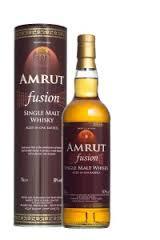A review of Four Gates Cabernet Sauvignon 2009 and Amrut Fusion Single Malt Whisky.
By Joshua E. London and Lou Marmon
Washington Jewish Week April 23, 2014

Vineyard owners have also been busily preparing for the upcoming growing season. Beginning in late winter, when the vines lie dormant, the dead brush is removed and the vines are pruned back by hand, a backbreaking and labor intensive chore. Trellis wires are repaired and in some vineyards the earth between the vines is plowed to control weeds and aerate the soil. Other growers prefer to maintain a cover crop between the vines to inhibit weed growth.
Those who manage vineyards also need to decide how to deal with the numerous potential pests and diseases that plague grapevines. There are many different approaches, ranging from pesticides and chemicals to organic (non-pharmaceutical) methods. Since vine pest infestations can spread from vineyard to vineyard very easily, however, many wine cultivation regions have laws requiring application of specific methods (read non-organic compounds) to the area’s vines throughout the year.
In France’s Burgundy region, for example, Emmanuel Giboulot found himself facing 6 months in jail and an over $ 40,000 fine for disobeying a state order to spray his father’s vineyard with a pesticide. Their “biodynamic,” organic vineyard didn’t even have any infection, but the regulations required an application of the chemicals. Subsequently the fine was reduced to $ 700 and Giboulot is appealing the ruling and plans to continue to maintain growing his vines his own way.
Organic winemaking eschews the use of artificial chemicals such as pesticides, fertilizers and other such materials (genetic engineering is also avoided). Instead, they prefer to use agricultural techniques and natural pest control methods. The precise definition of “organic wine” varies between jurisdictions, but the principles remain constant.
While the overwhelming bulk of kosher wines are not certified organic, the critically acclaimed boutique OK kosher -certified Four Gates Winery,
of Santa Cruz, Calif. (fourgates.com), a one-man-operation, is indeed organic certified. Limited in production, largely because owner-founder-winemaker Binyamin Cantz does everything himself and so can only produce so much wine, Four Gates wines are worth the extra effort to obtain (available only directly from Cantz: 831-457-2673). Consider, for example, the Four Gates Cabernet Sauvignon 2009, which is intensely flavored with blackberry, currant and red cherries accented with cloves, oak, cocoa and spice. A full-bodied beauty that has a long, lingering finish, it can be enjoyed now or cellared for a few years.
Spirits-wise, as Passover recedes into the distance, it’s time to kick back and relax with some lovely liquid chametz. To reintroduce oneself to the pleasures of leavened grain-based spirits, you can’t go wrong with a lovely, complex and intriguing whisky such as the Amrut “Fusion” Single Malt Whisky from India.
Ever since Scotch whisky was introduced into India in the 1820s, during the British Raj period, Indians have had a hankering for it—or, at least, for cheap knock-offs that aspired to taste like Scotch. For various reasons, domestic “whisky” production in India has mostly been blends based on neutral spirits that are distilled from fermented molasses (i.e., rum) with only a small portion consisting of traditional malt whisky, usually about 10 to 12 percent(if your lucky). Nearly everywhere else, this is NOT whisky, but in India regulations are rather different.
Then in the 1980s, Amrut Distilleries began producing whisky from malted grains. Established in Bangalore, Karnataka in 1948 by JN Radhakrishna Rao Jagdale, Amrut’s malted grain whiskies also began as blends of malted grain whisky and neutral spirit from molasses, but with higher percentages of malted grain. By the 1990s, the Indian market for real malt whisky had increased substantially, and so in 2004 Amrut launched its “Amrut” label single malt whisky in August 2004. It was the first single malt whisky to be made in India. A Sanskrit word loosely meaning –we are assured -“nectar of the gods” or “elixir of life,” Amrut was launched initially in Glasgow, Scotland – partly as homage to Scotch whisky.
Amrut Distilleries discovered early on that India’s hot weather makes whisky mature faster than it does in Europe or the United States; also the fraction lost to evaporation during aging, known as the angels’ share, is also higher in India, at 11–12 percent per year (in Scotland it is about 2 percent). It has been estimated that one year of barrel-aging in India is equal to three years of aging in Scotland.
Today there are over a dozen different Amrut single malt whiskies being produced, though only a handful have reached the U.S. (imported by the folks at PVI Global). Perhaps our favorite expression from the distillery is the Amrut Fusion (introduced in 2009, in the U.S. in 2010), produced using 25 percent Scottish peated barley and 75 percent unpeated Indian barley. The two barleys are mashed, fermented, pot distilled and matured separately in oak casks in Bangalore for around four to five years, and then married together for three months in ex-Bourbon casks.
Amrut “Fusion” Indian Single Malt Whisky (50 percent abv; $65): With lovely, rich aromas of barley, vanilla, citrus fruit, cinnamon, almonds, smoky ginger and a hint of peat, followed by slightly sweet flavors of caramel, creamy vanilla, coffee, figs, mixed canned fruits and chocolate, nicely balanced by lively peat smoke, some white pepper, ginger and a touch of orange marmalade. The medium length, satisfying finish adds a bit more spice and citrus with a subtle but definite dollop of smoke. Balanced and complex, yet without losing that rustic quality—an intriguing, really wonderful whisky. L’Chaim!
